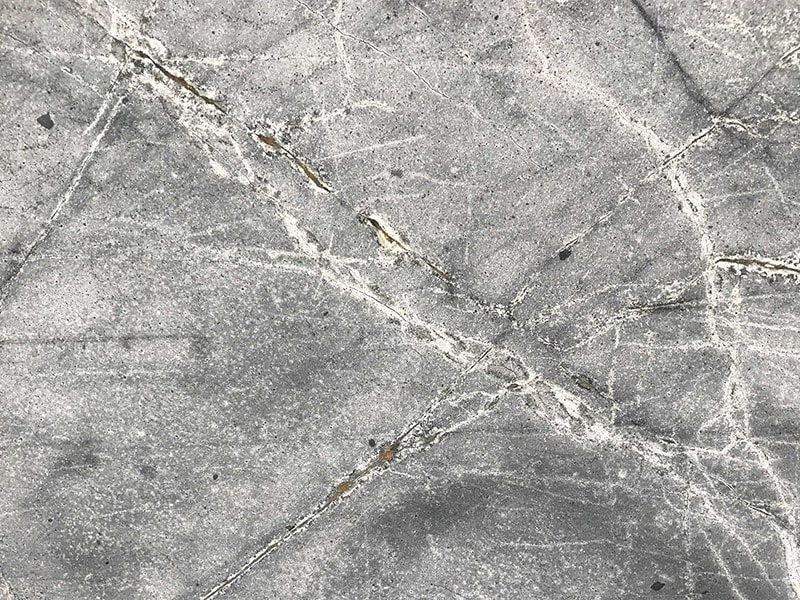After preparing a delicious meal, you must clean the filth from your quartzite surfaces. Quartzite is quite stain-resistant, but stains will appear over time if you don't keep it clean. Remember a few things before reaching for your standard kitchen cleaner on your quartzite countertops. In the following paragraphs, we will discuss the finest quartzite cleansers and how to protect your countertops so they retain their pristine appearance for years to come.
Basic Cleaning
Use A Microfiber Towel To Wipe Up Any Accidents Right Away.
Use just a soft, nonabrasive cloth to avoid scratching the finish. Quartzite countertops require immediate attention in the event of a spill. Don't let the liquid seep into the counters, or it will leave a permanent stain.
- If you spill an acidic substance on quartzite, like vinegar, citrus juice, or soda, try to wipe it up as soon as possible before the seal is broken.
- If you wipe up the spill, you risk spreading it all over your surfaces and worsening the stain.
A Putty Knife Made Of Plastic Should Be Used To Scrape Off The Dried Substance.
Maintain a 45-degree angle between the putty knife and the work surface. Use a putty knife to pry the stuck-on debris away from the surface gently. Repeatedly scrape in both directions to eliminate any material.
- Quartzite is easily scratched, and the seal can be broken using abrasive instruments such as metal putty knives, scouring sponges, or steel wool.
Hot, Soapy Water Can Quickly Wipe Off Your Countertop Once A Day.
Dip a microfibre cloth in hot dish soap and water. Remove dirt and grime from counters using a moist cloth. If any water is left on the counters, dry it immediately.
- Excessive soap use can leave a film on kitchen and bathroom surfaces and should be avoided.
For A More Thorough Cleaning, Use A Stone Cleanser That Is Ph-Neutral.
Choose a stone cleaner that is safe for nonporous surfaces to avoid scratching or damaging your countertops. Apply the cleanser to the counters by spraying it on. After 10 minutes, wipe the cleanser off with a microfiber cloth or damp sponge.
- You should not use citric acid, ammonia, or other acid-based cleansers on your quartzite, as they can erode the sealant and leave the stone vulnerable to damage.
- Quartzite countertops are safe to clean with ammonia-free Windex.
Removal of Stains
Cover The Discolouration With A Commercial Stone Poultice.
Before applying the poultice, wipe the area well with a damp towel. Then, transfer the poultice from its container to the stained area using a plastic putty knife. The poultice should cover the discolouration completely and extend beyond its borders by at least 1 inch (2.5 cm).
- To remove stains from your countertop that have penetrated deeper, you can use a stone poultice, a thick paste.
- Baking soda and water in equal parts can produce a poultice for removing oil-based stains.
- For oil-based stains, combine poultice powder with mineral spirits; for organic food stains, use 12% hydrogen peroxide.
Seal Your Poultice In A Plastic Bag And Tape It.
Using a large enough piece of plastic wrap, cover the poultice completely. After the poultice has been laid flat, cover it with the wrap and smooth it out. Secure the plastic wrap with masking tape strips at each edge.
- If you tape down the plastic wrap, the poultice will stay moist for longer, giving it a better chance to remove the stain from the quartzite.
Give The Poultice A Couple Of Days To Dry Out.
Remove the tape from one of the plastic wrap edges after the first day to speed up the drying process. When the poultice is dry, it will feel hard.
- The poultice will work to extract the stain from the stone's pores as it lies on your tabletop.
- For more stubborn stains, try letting the item undisturbed for two to three days.
Use A Plastic Putty Knife To Scrape Off The Poultice.
If the poultice has solidified, you can break it up using the edge of a putty knife. Using distilled water to dampen your poultice and persistent scraping, you should be able to remove it. Dry the surface with a microfiber cloth after wiping it down.
- Don't use metal putty knives or too abrasive sponges, or you risk scratching your surfaces.
If The Discolouration Persists After Using A Poultice, Try Again.
Verify that the stain is no longer present in the treated area of your countertop. You can apply another poultice on top of the stain, dry it, and remove it from the countertop.
- Quartzite countertops may require as many as five poultices to remove stubborn stains.
- If numerous poultices don't remove the discolouration, get a stone specialist to clean your counters.

Maintaining Quartzite
Use Coasters With Your Beverages.
Always use a coaster to prevent condensation and water damage from hot or cold beverages to your table or desk. Leaving a drink on the countertop might cause the liquid to spill across the surface and even seep into the stone.
- Don't leave cooking oil bottles on the counter where they can easily spill. Put them away in a drawer or on a separate shelf.
Trivets Or Heat Pads Should Be Used For Hot Cookware.
When serving hot food, use a trivet or hot pad to protect your countertops. In this situation, you can use a folded towel instead of a trivet or hot pad.
- Quartzite countertops are susceptible to discolouration and damage from heat.
- Similarly, it would help if you didn't put any appliances that get hot or splash oil on your countertops, like rotisserie, deep fryers, or toaster ovens.
Countertops Need To Be Resealed Every Six Months.
Get the counters free of clutter so you can get to work. Coat your entire countertop with a natural stone sealer and spray it on. After 15 minutes, use a microfiber cloth to remove any remaining sealer from the surface. The countertops can then be used again after waiting an hour to allow the sealer to set fully.
- Sprinkle a little water on your counter to examine if the seal needs replacing. After some time has passed, observe how the drips have changed. The countertop is only leaky if the droplets spread out. If the water pools and disappears to the surface, seal it.
FAQs About Masonry
Quartzite is less porous than some other natural stones, but it's still a good idea to seal it to enhance its stain resistance. Depending on the type of quartzite and its usage, sealing might be recommended every 1 to 3 years.
Clean the countertops regularly with a stone-safe cleaner to prevent dirt buildup that could dull the shine. Avoid using abrasive pads or harsh cleaning tools that might scratch the surface.
While quartzite is durable, it's not advisable to cut directly on the surface. Use cutting boards to prevent scratches and maintain the countertop's appearance.
Quartzite's unique patterns and colours should not affect your cleaning routine. Use a consistent cleaning method across the surface, and be cautious with abrasive materials near the veining to avoid potential damage.
Avoid dropping heavy objects directly onto the countertop. Use cutting boards, trivets, and hot pads to provide a protective barrier. If damage occurs, consult a professional for repair options.
Mistakes to Avoid When Caring for Quartz Countertops
Quartz countertops look great in kitchens, but people make several blunders that might damage them.
Not Wiping Spills Immediately
Any liquid, especially an acidic one like vinegar or wine, left on a stone countertop for too long will penetrate the material and leave a permanent stain. Quartz countertops are often advertised as being extremely easy to keep clean. However, remember that engineered stone isn't completely stain-proof.
Avoiding staining in the first place is preferable to trying to remove it later. If something does get spilt, though, don't delay in cleaning it up. To wash away the spillage, use a gentle dishcloth and warm, soapy water.
Misuse Of A Cleaning Product
If you use a cleaner on your quartz that isn't specifically made for it, you risk leaving a stain that will be difficult to remove. To prevent permanent damage to the surface, you should not use either an alkaline or an acidic cleanser. The sealant on countertops can be worn away over time by using harsh and alkaline cleaning products like vinegar, lime, and lemon. This will increase the surface's susceptibility to discolouration.
Only use a cleaner made specifically for quartz surfaces like granite or marble. Otherwise, you can keep your countertops looking great with just a little water and some hand, dish, or antibacterial soap. The water and soap solution is as effective as commercial quartz cleaners and can be used for general cleaning.
Scrubbing With Abrasive Whitening Pads
It would help if you did not wipe your counter with something too abrasive since doing so could leave tiny scratches. Such little blemishes may be unnoticed at first. However, they can dull the sheen of your quartz countertop.
When cleaning quartz, use a scouring pad or a microfiber cloth. Experts recommend these cleaning supplies because they are gentle on surfaces, absorbent, and don't leave behind watermarks.
Quartz countertops retain their beauty and elegance for a long time if they are cared for properly with the right cleaning tools.
Directly Setting Hot Dishes On The Countertop.
Quartz is resistant to heat, although it will still get hot enough to crack. Countertops can be damaged by heat more than 300 degrees Fahrenheit.
It would help if you didn't put hot pans or pots on your countertop since the high heat could melt the resin and leave a discoloured spot. Replacing the entire stone slab is usually necessary if heat damage has caused discolouration.
Also, the slab can break if the temperature suddenly drops or rises dramatically. Quartz countertops can be damaged by direct heat and should only be used with trivets or heat-resistant mats.
Neglecting To Use A Cutting Board
Preventing quartz countertop damage is essential. There are a lot of quartz tiles that may be used to make Bellingham countertops. They can be used without worry in the kitchen.
However, using your knives with enough force on the surface, you can scratch them while chopping and cutting your ingredients. A quartz countertop's beauty can be quickly diminished by everyday wear and tear, like scratches and nicks. To avoid cutting yourself when preparing food, always utilise a chopping board.
Conclusion
Quartzite countertops are highly stain-resistant, but they can still appear over time if not properly cleaned.
To maintain quartzite countertops, use coasters with beverages to prevent condensation and water damage from hot or cold beverages. Keep cooking oil bottles away from the countertop where they can easily spill.
When serving hot food, use a trivet or hot pad to protect your countertops. Folded towels can be used instead of trivets or hot pads.
Quartzite countertops are susceptible to discolouration and damage from heat, so it is important to avoid placing hot appliances that get hot or splash oil on them.
Quartz countertops need to be resealed every six months to prevent damage. To do this, coat the entire countertop with a natural stone sealer and spray it on. After 15 minutes, remove any remaining sealer with a microfiber cloth and wait an hour for the sealer to set fully. If the seal needs replacing, sprinkle water on the counter and observe how the drips have changed.
Some mistakes to avoid when caring for quartz countertops include not wiping spills immediately, using harsh cleaning products, using abrasive whitening pads, and directly setting hot dishes on the countertop. Engineered stone is not completely stain-proof, so it's important to avoid staining in the first place. Instead, use a gentle dishcloth and warm, soapy water to clean the spillage.
Using a cleaner specifically made for quartz surfaces like granite or marble can leave permanent stains that are difficult to remove. Avoid using alkaline or acidic cleansers, as they can wear away the sealant over time and increase the surface's susceptibility to discolouration. Instead, use a water and soap solution for general cleaning.
When cleaning quartz, use a scouring pad or a microfiber cloth, as they are gentle, absorbent, and don't leave behind watermarks. Quartz countertops retain their beauty and elegance for a long time if cared for properly with the right tools.
In addition to these precautions, quartz countertops can be damaged by heat more than 300 degrees Fahrenheit, so it's essential to avoid placing hot pans or pots on the countertop. Replacing the entire stone slab is usually necessary if heat damage has caused discoloration. Quartz countertops should only be used with trivets or heat-resistant mats.
Lastly, avoiding using a cutting board is crucial to prevent quartz countertop damage. While quartz tiles can be used in the kitchen, using knives with enough force can scratch them, reducing the countertop's beauty.
Content Summary:
- After preparing a delicious meal, you must clean the filth from your quartzite surfaces.
- Remember a few things before reaching for your standard kitchen cleaner on your quartzite countertops.
- In the following paragraphs, we will discuss the finest quartzite cleansers and how to protect your countertops so they retain their pristine appearance for years to come.
- Quartzite countertops require immediate attention in the event of a spill.
- If you wipe up the spill, you risk spreading it all over your surfaces and worsening the stain.
- Use a putty knife to pry the stuck-on debris away from the surface gently.
- Dip a microfibre cloth in hot dish soap and water.
- Remove dirt and grime from counters using a moist cloth.
- If any water is left on the counters, dry it immediately.
- Choose a stone cleaner that is safe for nonporous surfaces to avoid scratching or damaging your countertops.
- Then, transfer the poultice from its container to the stained area using a plastic putty knife.
- To remove stains from your countertop that have penetrated deeper, you can use a stone poultice, a thick paste.
- Using a large enough piece of plastic wrap, cover the poultice completely.
- After the poultice has been laid flat, cover it with the wrap and smooth it out.
- Secure the plastic wrap with masking tape strips at each edge.
- If you tape down the plastic wrap, the poultice will stay moist for longer, giving it a better chance to remove the stain from the quartzite.
- When the poultice is dry, it will feel hard.
- The poultice will work to extract the stain from the stone's pores as it lies on your tabletop.
- Dry the surface with a microfiber cloth after wiping it down.
- Verify that the stain is no longer present in the treated area of your countertop.
- Leaving a drink on the countertop might cause the liquid to spill across the surface and even seep into the stone.
- Don't leave cooking oil bottles on the counter where they can easily spill.
- When serving hot food, use a trivet or hot pad to protect your countertops.
- In this situation, you can use a folded towel instead of a trivet or hot pad.
- Quartzite countertops are susceptible to discolouration and damage from heat.
- Similarly, it would help if you didn't put any appliances that get hot or splash oil on your countertops, like rotisserie, deep fryers, or toaster ovens.
- Get the counters free of clutter so you can get to work.
- Coat your entire countertop with a natural stone sealer and spray it on.
- Sprinkle a little water on your counter to examine if the seal needs replacing.
- Quartz countertops are often advertised as being extremely easy to keep clean.
- However, remember that engineered stone isn't completely stain-proof.
- The sealant on countertops can be worn away over time by using harsh and alkaline cleaning products like vinegar, lime, and lemon.
- Only use a cleaner made specifically for quartz surfaces like granite or marble.
- Otherwise, you can keep your countertops looking great with just a little water and some hand, dish, or antibacterial soap.
- However, they can dull the sheen of your quartz countertop.
- When cleaning quartz, use a scouring pad or a microfiber cloth.
- Quartz countertops retain their beauty and elegance for a long time if they are cared for properly with the right cleaning tools.
- Quartz countertops can be damaged by direct heat and should only be used with trivets or heat-resistant mats.
- Preventing quartz countertop damage is essential.
- There are a lot of quartz tiles that may be used to make Bellingham countertops.
- However, using your knives with enough force on the surface, you can scratch them while chopping and cutting your ingredients.

